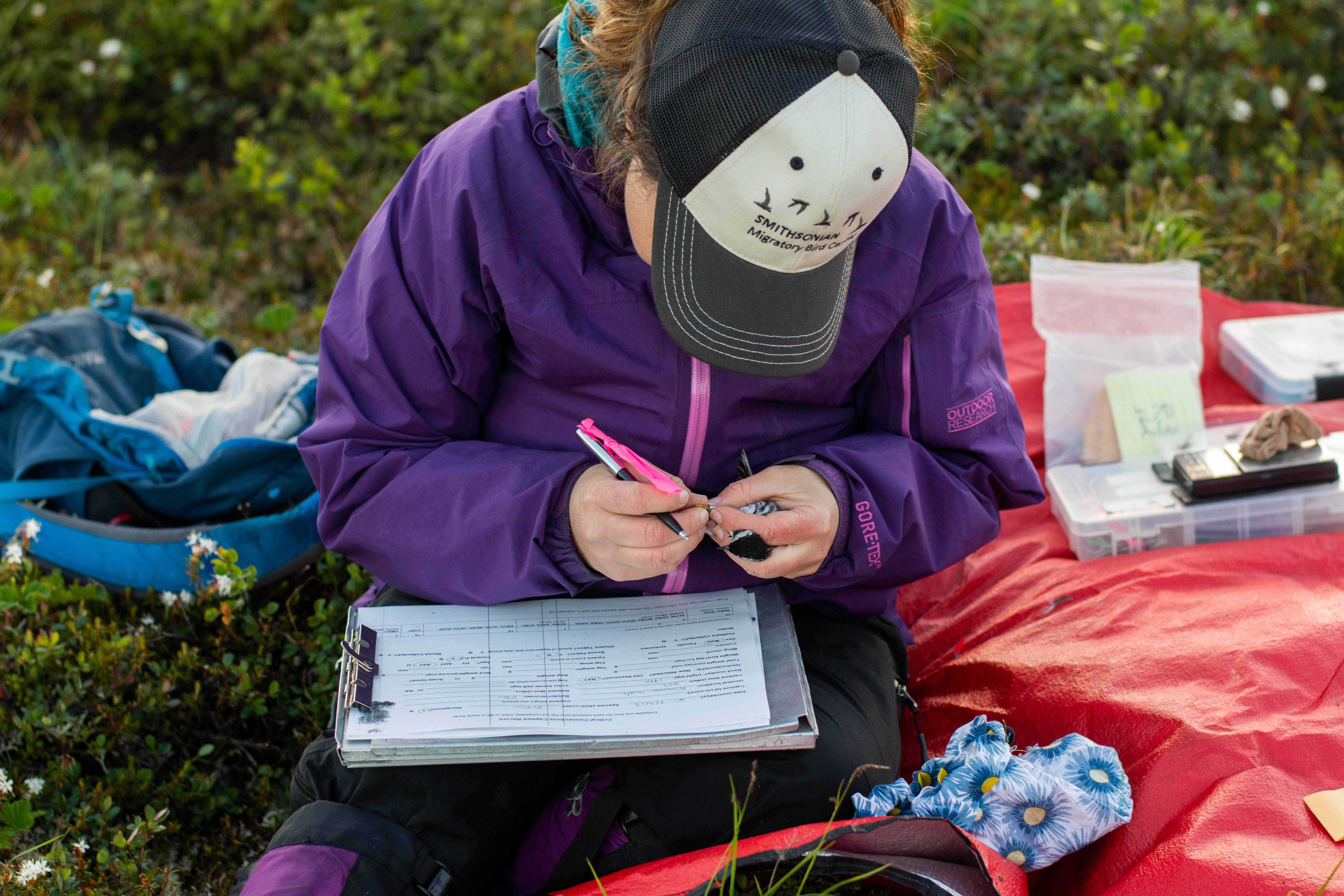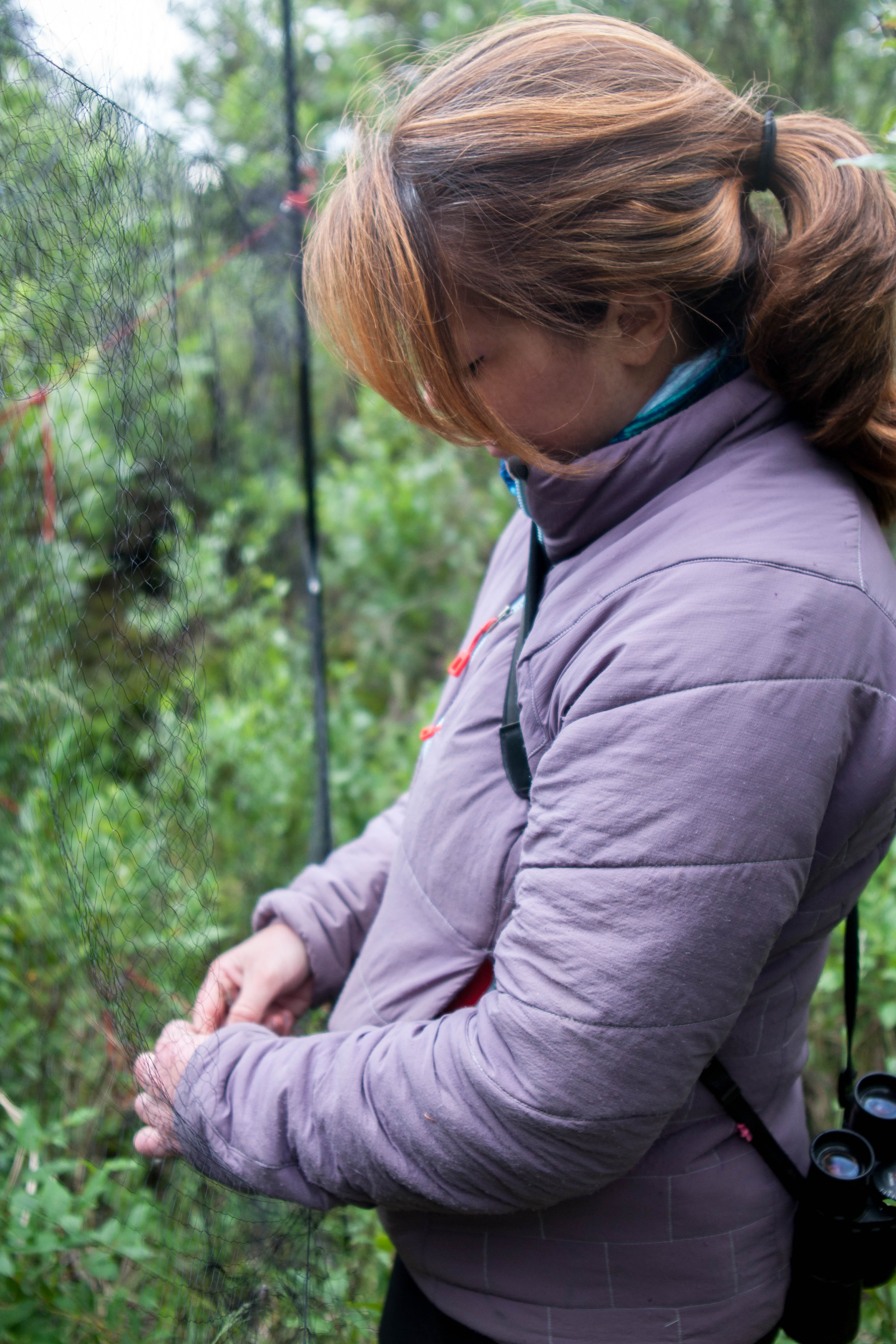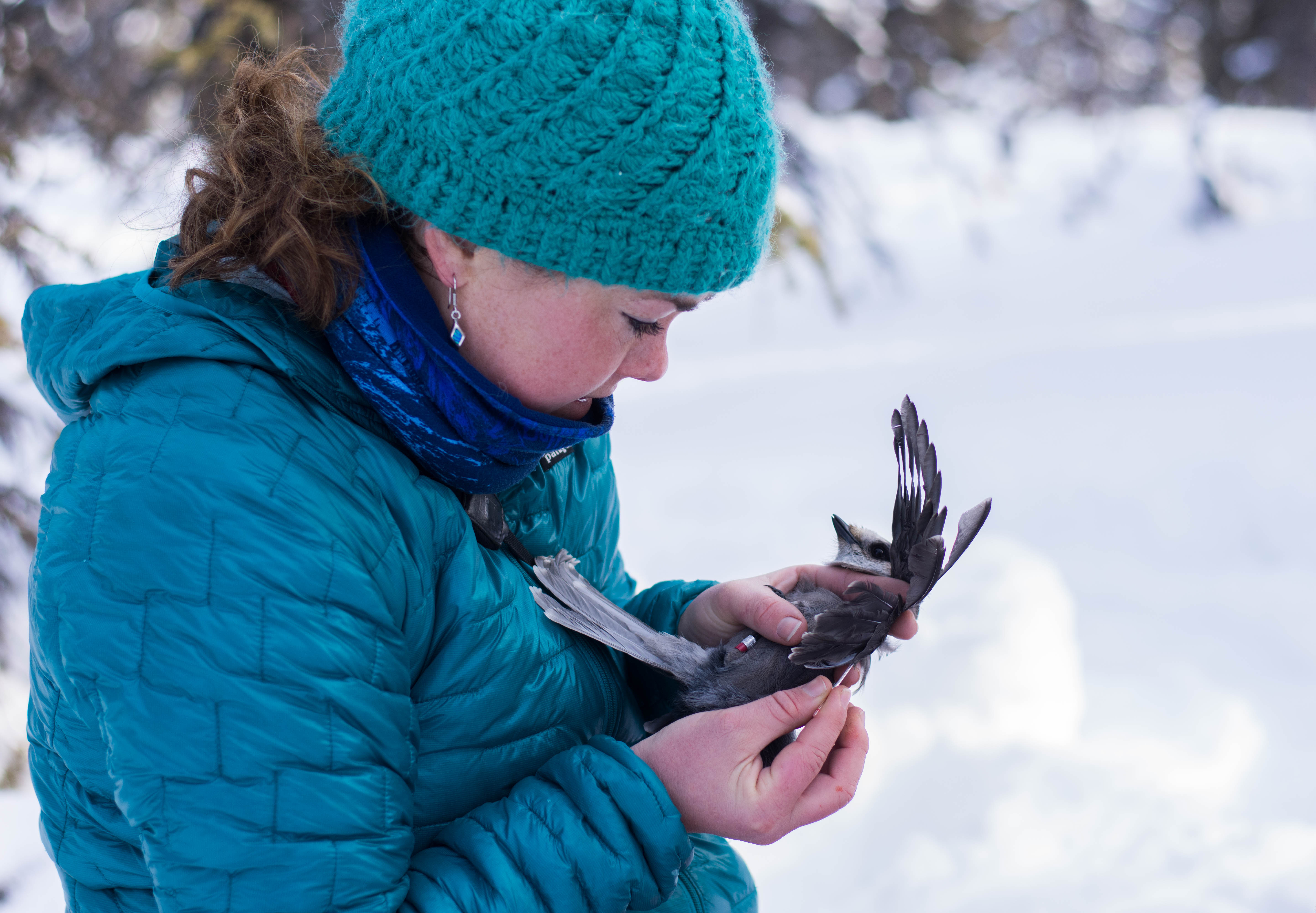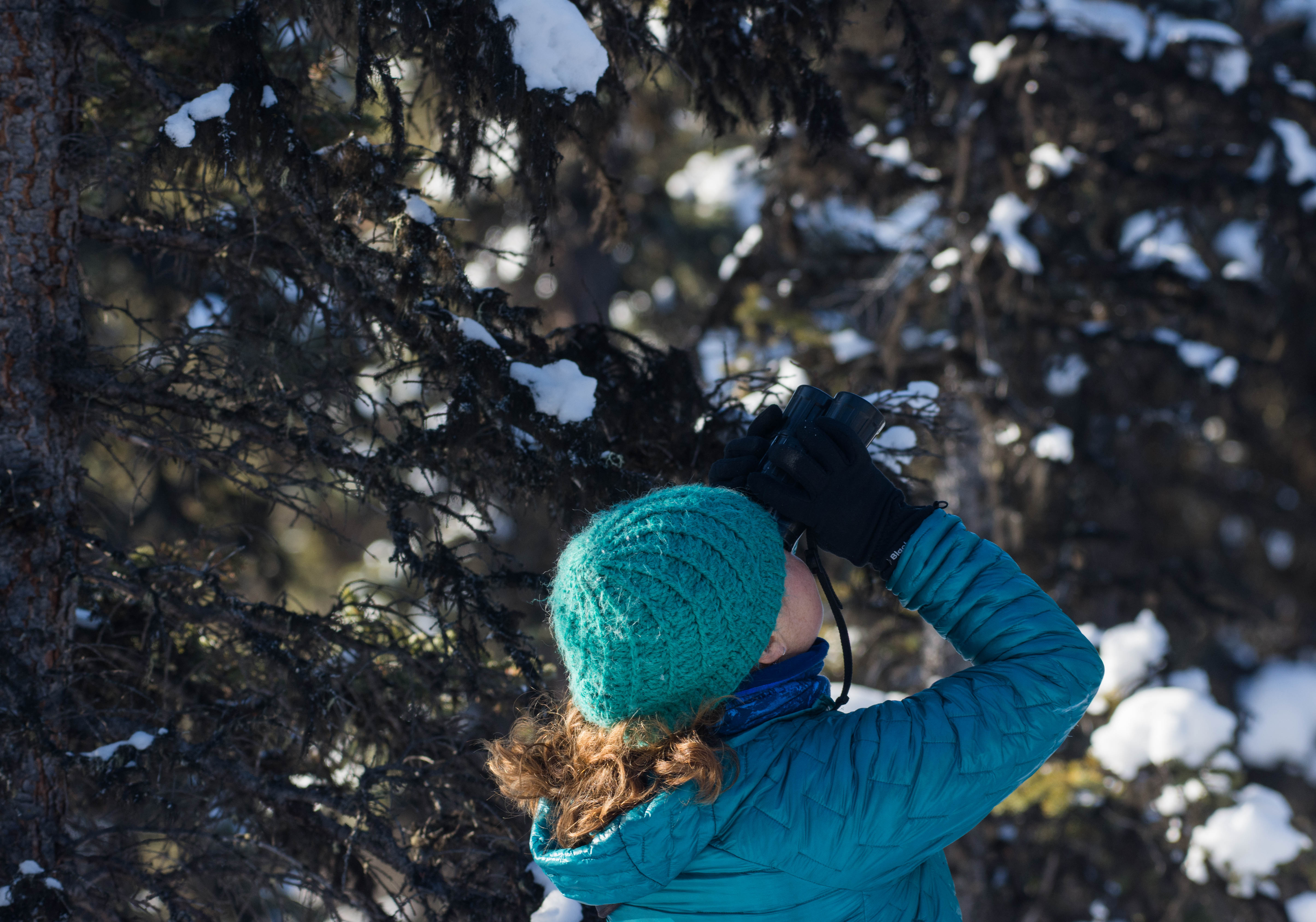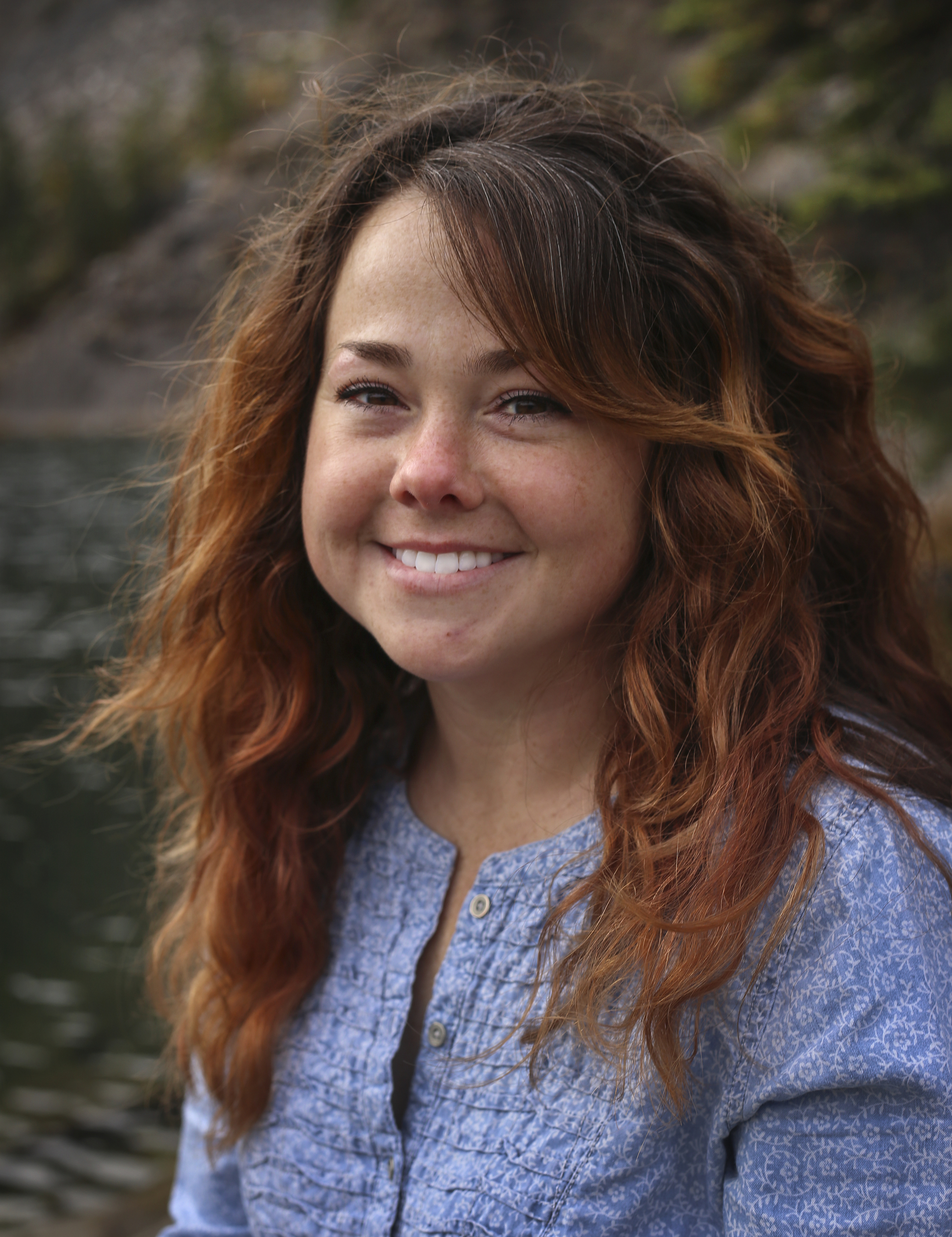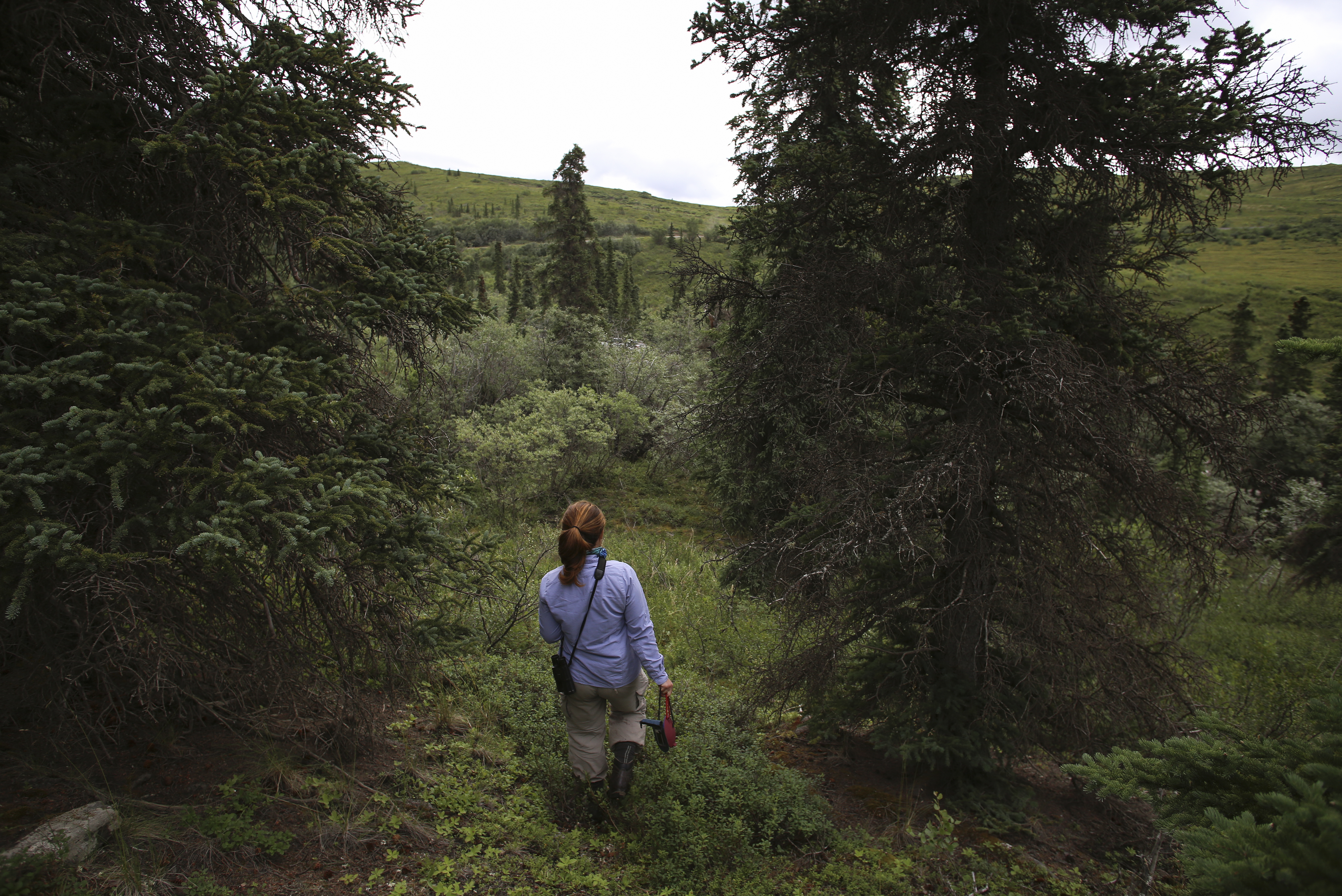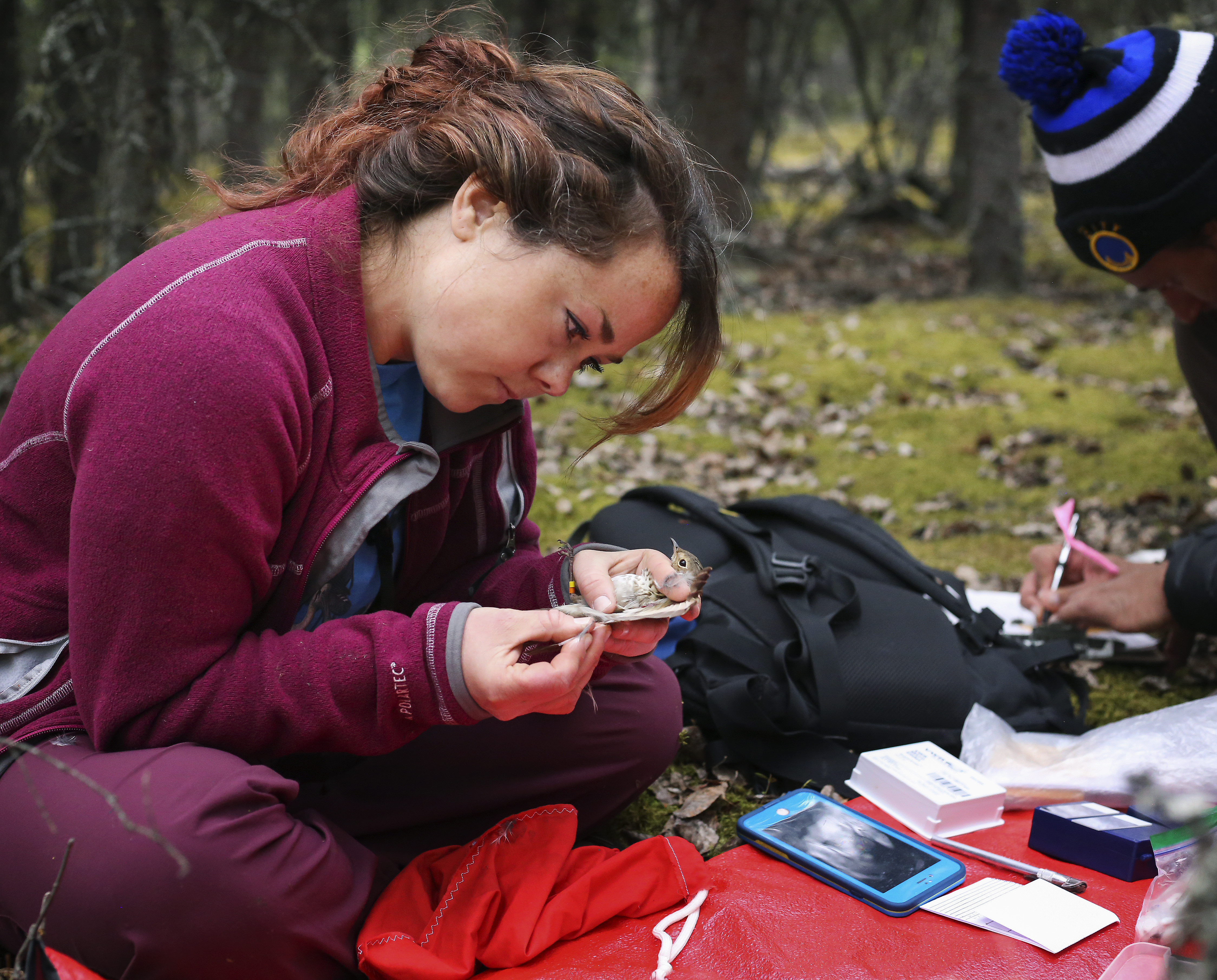6-True story: Migrating robins & thieving capuchins
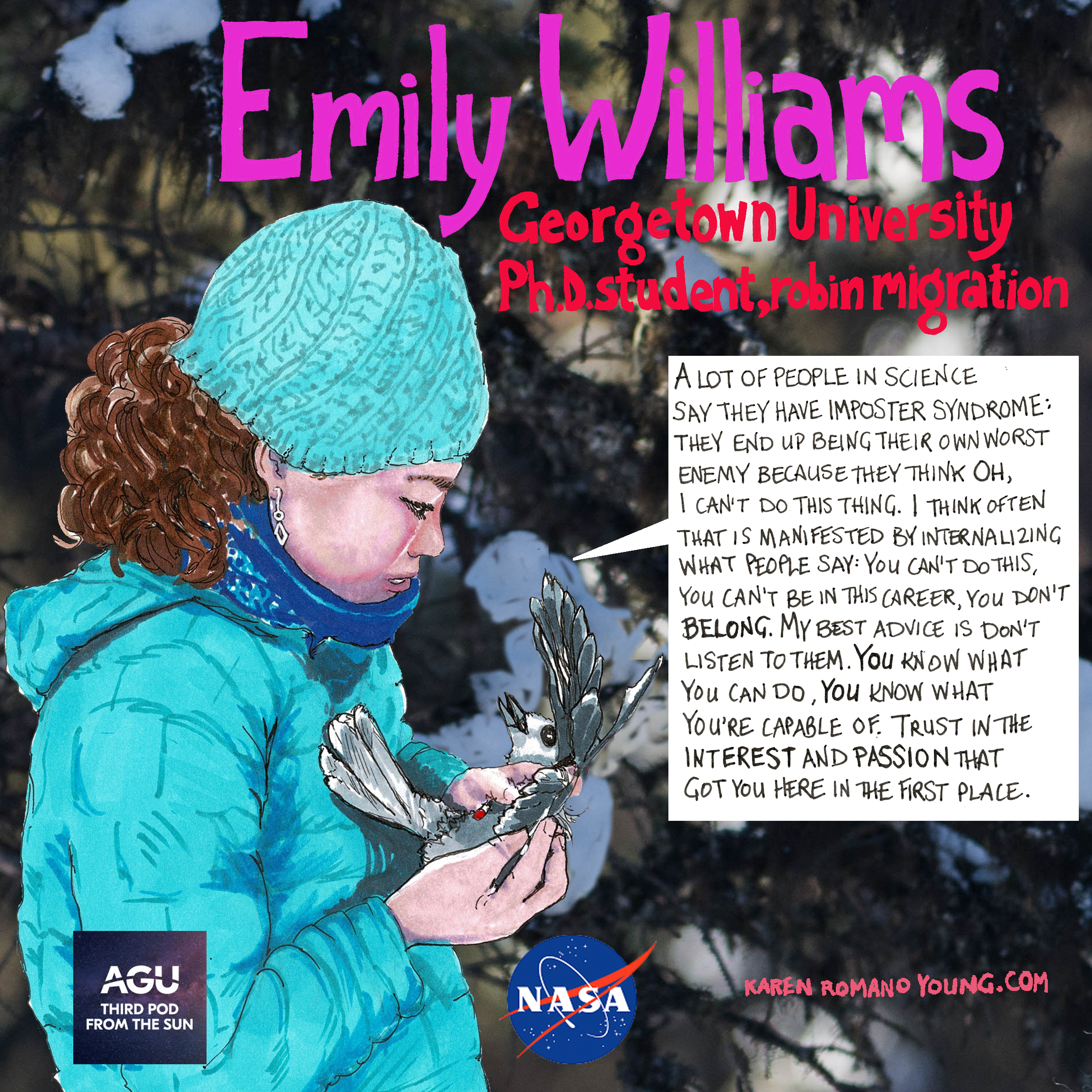 Emily Williams has traveled the world in search of birds. As a biologist, she’s worked in Kansas, Argentina, Australia, and Denali, and studied loons, flycatchers, kingbirds, and more. And even with all these experiences and diverse species interactions, she’s now landed (ha, get it?!) on studying the common robin. But before you dismiss it, Emily makes a compelling case for this backyard bird. We talked with her about unseen pitfalls of catching birds in cities, protecting your food from monkeys in Peru, and what we can learn about the under-appreciated robin.
Emily Williams has traveled the world in search of birds. As a biologist, she’s worked in Kansas, Argentina, Australia, and Denali, and studied loons, flycatchers, kingbirds, and more. And even with all these experiences and diverse species interactions, she’s now landed (ha, get it?!) on studying the common robin. But before you dismiss it, Emily makes a compelling case for this backyard bird. We talked with her about unseen pitfalls of catching birds in cities, protecting your food from monkeys in Peru, and what we can learn about the under-appreciated robin.
This episode was produced by Shane M Hanlon and mixed by Collin Warren. Artwork by Karen Romano Young. Interview conducted by Ashely Hamer.
Transcript
Shane Hanlon: 00:00 Hi, Nanci.
Nanci Bompey: 00:00 Hey, Shane.
Shane Hanlon: 00:02 If you could migrate somewhere for the winter, where would you go?
Nanci Bompey: 00:06 Specifically for the winter? Because I’d probably rather migrate for the summer, to be honest.
Shane Hanlon: 00:10 Oh, that’s a good point. At any time.
Nanci Bompey: 00:12 [crosstalk 00:00:12] summer here in DC. In the summer in DC, I would like to migrate to the mountain somewhere, so it would be nice and cool.
Shane Hanlon: 00:20 Any geographic region?
Nanci Bompey: 00:21 I mean in Colorado or something like that. Wouldn’t that be nice? I mean, winter, fine, but summer here is so brutal.
Shane Hanlon: 00:27 Yeah. That’s actually a great point. So, I don’t … I hate the summers here. I hate the warm. I really do. But I also get kind of just sad in the winter because I want snow.
Nanci Bompey: 00:36 You’d rather have more snow?
Shane Hanlon: 00:37 I think I’d want more snow. Yeah. I think maybe … Oh, I have a great idea. Okay. So, let’s buy a place in the mountains and we’ll just do our own version of a timeshare, and so I’ll take it in the winter and you can take it in the summer.
Nanci Bompey: 00:51 That sounds perfect. Let’s do it.
Shane Hanlon: 00:51 And we’ll never see each other.
Nanci Bompey: 00:53 Yeah, perfect.
Shane Hanlon: 00:53 Even better.
Nanci Bompey: 00:53 Yeah, that’s the best part of it.
Shane Hanlon: 01:00 Science is fascinating but don’t just take my word for it. Join us as we hear stories from scientists for everyone. I’m Shane Hanlon.
Nanci Bompey: 01:10 And I’m Nanci Bompey.
Shane Hanlon: 01:11 And this is Third Pod from the Sun.
Shane Hanlon: 01:15 All right. So you might have guessed, we’re talking about migration today, but not human migration like what Northern retirees do when they go south for the winter, migration in robins.
Nanci Bompey: 01:25 Huh, like the robins that we see just every day, I guess in our area sometimes?
Shane Hanlon: 01:30 Yeah. Yeah. I mean, I got to admit, I had a similar reaction like, why should I care about robins? It turns out they’re fascinating and can actually tell us a lot about, among other things, how things respond to climate change. We talked with a researcher who knows all about robins and has some wild stories about working with birds in the field. Our interviewer was Ashely Hamer.
Emily Williams: 01:56 My name is Emily Williams and I’m currently a PhD student at Georgetown University studying the migration of American robins.
Ashely Hamer: 02:13 And what does that teach us? Like, why study the migration of robins?
Emily Williams: 02:17 So, knowing more generally like what shapes migration in birds, but because robins are everywhere, they’re super flexible. And what we’re noticing with our work is that it seems like some populations can modify what they do year to year, depending upon the current conditions. For example, we just got data from this bird in Indiana that was basically in Indiana all year long, but in early January this year, it jetted down to Alabama.
Emily Williams: 02:53 If you’re in the DC Area, you might remember basically the entire Eastern half of the states in early January, up until that point, it was a pretty mild warm winter. And then suddenly, we got this crazy winter storm that covered a lot of the Eastern half of the states. So, it’s probably likely that, that bird responded to that and went further south. So, studying Robins in terms of not only their migration, but trying to figure out, how do they deal with environmental change? Things like climate change will be really informative for how other birds and other animals cope with these changes.
Ashely Hamer: 03:30 That’s really cool. And you talking about what you study gave me another question. How do you catch a robin?
Emily Williams: 03:37 There’s a couple of technique that you can do. The typical technique that we use is called mist-netting. And it’s a common technique for smaller birds. Generally, you also use mist-netting to catch bats as well. It’s basically this really large net. You can get different size nets, but a typical size is roughly 30 feet in length and stands at about 10 feet tall. How I explain it to people is that the idea is you put it up and you can barely see it. So, it’s super fine mesh. And ideally you’re putting it in an area that is more shaded and putting it in an area that the birds likely to fly through and get caught.
Emily Williams: 04:28 A lot of the work that I’m doing with robins is totally entrenched within the urban system. I’m working in people’s backyards, I’m working in public parks. I see random people around my field setup all the time. And last summer, I had set up at a public park, and as it turns out, as I’m learning through doing urban field work, unfortunately a lot of people don’t take well to seeing birds get caught in nets.
Emily Williams: 05:02 I think this person just saw the setup, had a pretty immediate emotional visceral reaction, and just started ripping apart our nets. I had never had that happen before. I could have handled the situation differently, in that what I should have done is just taken a step back and immediately call the police and started filming what was happening. But because what’s typical for the grad student experience, you’re initially worried about your equipment, that equipment costs a lot of money, and I immediately just like, oh my God, these nets cost so much money and I don’t have a lot of money for my project. I need to stop her and at the cost of my own safety, which should never be the case.
Emily Williams: 06:00 I went up to her and just put my arms up, trying to stop her from ripping the nets. And then, of course, then she started pushing into me and trying to continue to rip the nets. Ultimately, the police got involved and the situation got sorted. We received funds to cover the cost of the nets that got destroyed. But yeah, I’d say that was an experience that I couldn’t have anticipated, unfortunately. And we had fluorescent vests on and we have signage that says what we’re doing and why, and to please keep distance, but in a respectful way.
Emily Williams: 06:44 But I could not have anticipated that someone was going to come up and start destroying the equipment while there were birds in the net. So, it was a pretty traumatic experience, but it was a really good learning experience as well in terms of what I would do differently next time. And hopefully there won’t be a next time.
Ashely Hamer: 07:09 So, you just told us a story about something scary that happened in the field. Do you have any funny or fun stories about things that happened in the field?
Emily Williams: 07:20 The time that I was in Peru was just full of so many funny experiences, and in particular, working alongside capuchins all the time. This experience in Peru, for context, we stayed in tents for four months on a wooden platform in the middle of cloud forest. We had all of this food and equipment stored in the rafters of this wooden platform. So, the platform itself, our tents were on, but then we had an overhang, and then we stored a lot of our stuff in this overhang.
Emily Williams: 08:00 And it was a constant battle with capuchins, which are incredibly smart, from keeping them from getting into our stuff. We also had this wooden case that we kept … We had eggs, and this butter, and this type of bread in there. We actually would have to keep it locked. So, not just like … This wooden case had a lid, and if you close the lid, that wasn’t enough to keep the capuchins out. They just opened the lid, go in there and steal your food. So, it was one of those things that each morning, we’d have our breakfast, and whoever was the last one to leave the station had to remember to put everything completely away and lock the wooden case.
Emily Williams: 08:57 And of course, you know where this is going. On any number of occasions, someone would forget to put something away. A fun memory is the butter was … And the butter would be in this Tupperware, with also a lid. And so somebody had put the butter into the wooden case, but had not locked it. We had gone out, out into the forest all day, come back and we see that it just looks like utter mayhem. The toilet paper had gotten into and so it looked like somebody teepeed the whole station.
Emily Williams: 09:37 It was just literally on all the surrounding trees, like all over our tents, all over the table. The butter Tupperware was completely licked clean.
Ashely Hamer: 09:48 Wow. You go there to study birds and you got to deal with monkeys. What about your most proud personal achievement?
Emily Williams: 10:05 When I was working in Denali, I did a school program. And before I started the program, the school teacher I was working with primed the students to say, “Oh, we’re going to get this bird biologist from the national park come, and she’s going to do a program with us.” And it was going to be specifically on Canada jays, which they’re a resident bird of that area. And she told me how one student had said, “Oh, yeah, I use that bird for target practice.” Which was, my initial reaction was like, oh my God, that’s illegal.
Emily Williams: 10:47 Obviously this stuff happens even despite the fact that it’s illegal. But that same kid, after that program, I actually heard from the parents of that kid later down the road, “We never knew anything about Canada jays, and it’s so cool that they’re in our backyard, and so and so,” their son, “has been telling us all this stuff and how we need to put our feeders out and we need to do this, that, and the other because climate change is really impacting them.” It’s stories like that I get a lot of satisfaction and fulfillment out of in terms of what I find as my personal achievements.
Nanci Bompey: 11:46 So, have you ever changed someone’s mind like about science or conservation, or something?
Shane Hanlon: 11:52 Well, so I studied how pesticides were mostly bad for frogs and turtles for my PhD. And I think that my parents now use them less because of it. But on the flip side of that, I also studied snakes, and my mom is still deathly afraid. So, you win some, you lose some. Regardless, I want to thank Emily for taking time to chat with us.
Nanci Bompey: 12:13 Yes, and special thanks to Ashely Hamer for conducting the interview, NASA, for sponsoring this series, and to Karen Romano Young for her illustration of Emily.
Shane Hanlon: 12:22 This episode was produced by me with audio engineering from Collin Warren.
Nanci Bompey: 12:26 We would love to hear your thoughts. Please rate and review this podcast. And you could always find new episodes on your favorite podcasting app or at thirdpodfromthesun.com.
Shane Hanlon: 12:35 Thanks all, and we’ll see you next week. Cool.
Nanci Bompey: 12:43 Ow.
Shane Hanlon: 12:48 Bompey signing off.
Nanci Bompey: 12:49 Ow.

